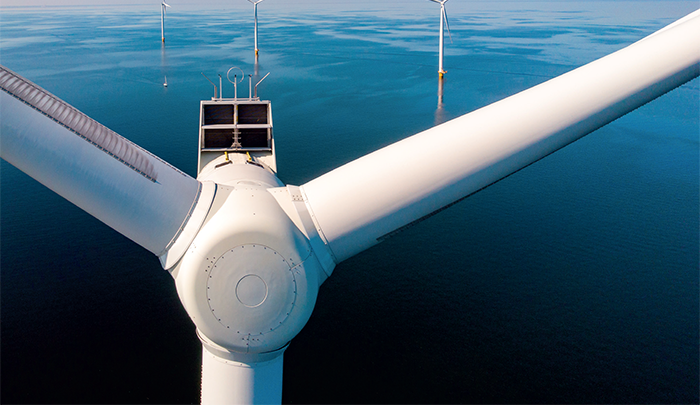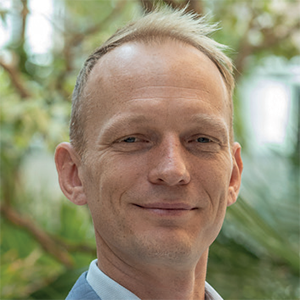
How to increase the affordability of wind energy.By Wouter Maas
True alternative
The global transition to renewable energy is crucial to realize a more sustainable future for people and the planet. In fact, renewable energy and energy efficiency measures could achieve up to 90 percent of the carbon reductions needed to minimize climate change, according to the International Renewable Energy Agency.
Countries and organizations are feverishly reviewing their options as they strive to reach important environmental targets. This includes the ambition set at COP26 to keep a maximum of 1.5 degrees Celsiusof warming within reach, and the pledge made by 30 firms in the FTSE100 to eliminate their carbon emissions by 2050.
 As the world urgently looks for solutions, offshore wind provides a cleaner, safer, and more sustainable energy source. However, even with the best intentions, buyers have unavoidable commercial considerations, and the cost of wind energy needs to be made more affordable. Offshore wind has made significant strides in terms of cost and is now competitive with conventional sources, however more efficiencies are still needed, particularly at more challenging sites further away from the shore.
As the world urgently looks for solutions, offshore wind provides a cleaner, safer, and more sustainable energy source. However, even with the best intentions, buyers have unavoidable commercial considerations, and the cost of wind energy needs to be made more affordable. Offshore wind has made significant strides in terms of cost and is now competitive with conventional sources, however more efficiencies are still needed, particularly at more challenging sites further away from the shore.
The pressure is on global wind farm operators to bring down the Levelized Cost of Energy (LCOE) and provide a financially feasible alternative to fossil fuels.
LCOE: The holy grail in the offshore industry
LCOE is the ratio between total discounted lifetime cost and total discounted lifetime production. This metric is the holy grail in the offshore industry – relied upon by wind farm operators to demonstrate that they can provide the most cost-efficient solution in a highly competitive arena. Indeed, across the sector, asset managers are under huge pressure to deliver against LCOE targets and secure new contracts.
With LCOE, buyers can also get a more accurate comparison between the cost of renewables and the cost of more conventional energy sources such as coal and gas. For business decision-makers, it is the most important measure to determine whether it is commercially viable to invest in renewables.
There are, of course, many costs associated with wind projects across the entire asset life cycle – from site characterization through to the design phase, installation, maintenance, and decommissioning. Any efficiencies applied across the value chain can help to bring down the overall LCOE and support the global transition to wind power.
The role of structural health monitoring in reducing LCOE
There is a significant opportunity for structural health monitoring to extend the life cycle of wind farms and, subsequently, reduce the LCOE. In fact, our own analysis suggests that having a wind farm in operation for just one more year could generate more than €165 million in extra revenue to a 77-turbine wind farm.
By monitoring offshore wind turbines remotely with a set of specific sensors, an operator can identify and correct issues such as fatigue, corrosion and scour before they impact the asset’s integrity or performance. Furthermore, if energy prices are low on a turbine with a high fatigue loading, the operator can simply turn it off to reduce its fatigue consumption. This can help to make sure turbines function efficiently to the end of their life cycle and beyond.
Structural monitoring can also help to increase production as it helps to reduce unexpected breakdowns. Tasks such as restoring a corrosion protection system or securing a free-floating cable involve a considerable period planning, however preventative measures can increase the wind farm availability and minimize downtime. This is in addition to costing significantly less than corrective actions. Indeed, a one percent increase in availability could add more than €43 million of production to a 77-turbine wind farm.
 Industry innovation
Industry innovation
To reap maximum cost rewards, operators should be aiming for subsea inspections to be carried out less frequently. In fact, a shift from four-yearly to five-yearly inspections could reduce OPEX of a 700 MW offshore wind farm by €2.5 million over the asset lifetime.
New innovations are helping to make this a reality. Automated data delivery, for example, can provide real-time access to data and continuous remote monitoring of assets. This can provide early indications of fatigue or failure, helping to reduce the LCOE, enhance asset performance, minimize downtime and failures, and improve safety for wind farms. Overall, better access to real-time data will help operators and asset owners to make informed decisions and implement strategies based on the reality of the situation, versus relying on gut feel. This technological advancement will help to increase the speed from observation to action, improve operational efficiency, and reduce the frequency of subsea inspections.
Operators should also consider the long-term benefit of integrating all available GEO data – from site investigation to asset inspection and monitoring – into a digital twin of their offshore asset. This will enable condition-based and preventative maintenance strategies to be implemented on a per turbine basis, maximizing the total value of the asset, and speed, facilitating any decision-making process, and at the same time, extending its lifetime and its value.
Ultimately, structural monitoring combined with remote inspection solutions whether above or below water, will optimize maintenance and extend the wind turbine life cycle beyond 25 years, making it a priority activity for operators and asset owners alike. Those that look beyond daily operations and take steps to ensure the long-term structural health of their assets will unlock significant additional value – helping to decrease LCOE and win a competitive advantage in the market.
For a list of the sources used in this article, please contact the editor.
Wouter Maas
www.fugro.com
Wouter Maas is Strategy Director Offshore Wind O&M at Fugro, the world’s leading GEO data specialist. Adopting an integrated approach that incorporates acquisition and analysis of GEO data and related advice, Fugro provides solutions. With expertise in site characterization and asset integrity, clients are supported in the safe, sustainable and efficient design, construction and operation of their assets throughout the full lifecycle. Employing approximately 9000 people in 59 countries, Fugro serves clients around the globe.